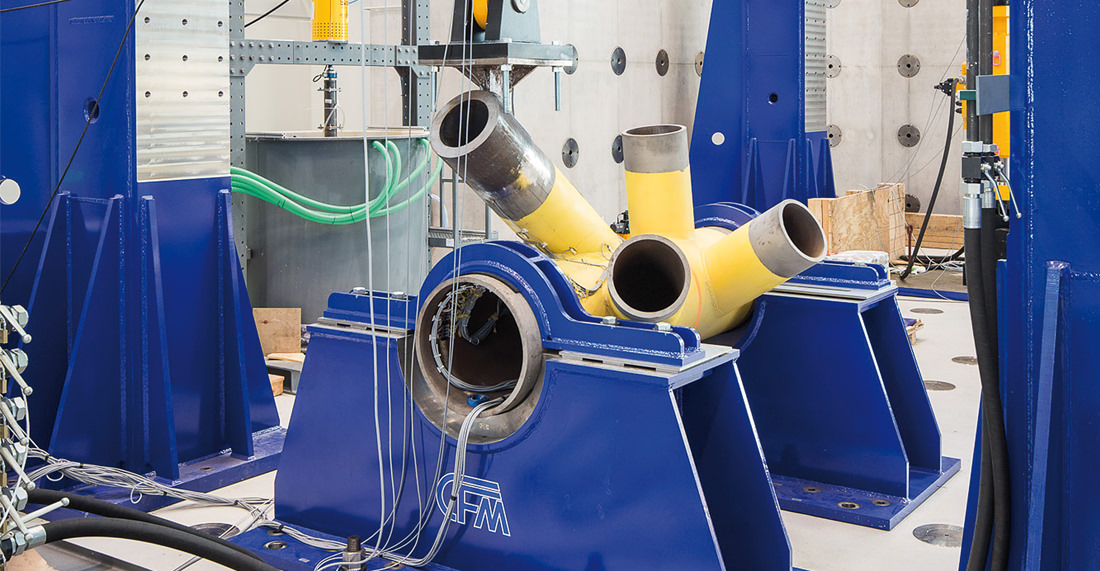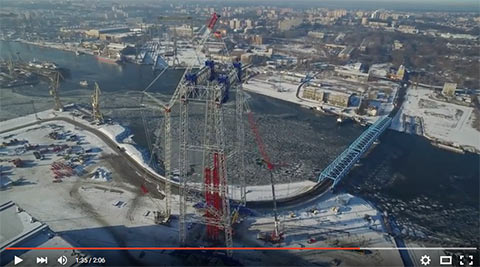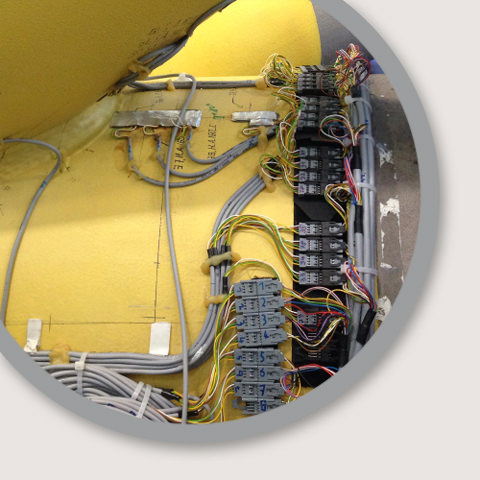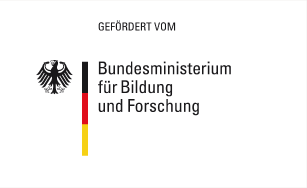Sustainability in jacket structures for offshore wind energy plants
Automated node welding, maintenance-free corrosion protection
Besides components such as cable conduits, boatlandings and supply platforms, the main application for HFI-welded steel tubes in offshore wind energy plants is jacket structures. Salzgitter Mannesmann Line Pipe is currently involved in two innovations that can heighten the sustainability of these structures in an economically viable way.
In terms of power generation potential, offshore wind parks are significantly superior to their onshore cousins thanks to the wind speeds constantly prevailing on the high seas. At the same time, the conditions typically encountered during the construction and operation of such plants place much higher demands on both people and materials. What started at the beginning of the millennium with initial test and research facilities has meantime evolved into an industry of high-tech products.
Now that the technically feasible has been identified and ever larger and more energy-efficient plants have been developed, the focus is on raising the level of economic efficiency.
The measures for increasing productivity and efficiency not only concern the wind turbines themselves, but also the manufacture of their foundation structures.
30 % cost reduction thanks to automated node welding
If jacket structures are to remain competitive vis-à-vis monopiles, industrial series production must replace manual fabrication. HFI-welded steel tubes from Salzgitter Mannesmann Line Pipe, which come in mill lengths of up to 18 m, are predestined for this strategy.
On 22 October 2015, the symposium "Offshore systems and components for wind energy towers" took place in Gdansk. Salzgitter Mannesmann Steel Trading Poland brought together some 50 attendees who were informed in detail about the savings potential achievable through the use of standardized tube diameters in conjunction with automated node production by welding robots.
Polish production plant opens up new possibilities
This was also an occasion to introduce the visitors to the new production plant for foundation structures which Bilfinger Mars Offshore (BMO) runs in Szczecin, Poland, and where automated welding has opened up completely new and much more economical options.
The plant put into operation in 2015 is entirely dedicated to the series production of offshore foundation structures. A unique facility of this kind in Europe, it features a high degree of automation, state-of-the-art automatic equipment for series welding of nodes, a huge field warehouse and a gantry crane for the final assembly of structures up to 98 m in height and 1,400 tons in weight. The crane is also used for loading the structures onto ships.
Cost advantages of 3- and 4-legged series produced jacket structures
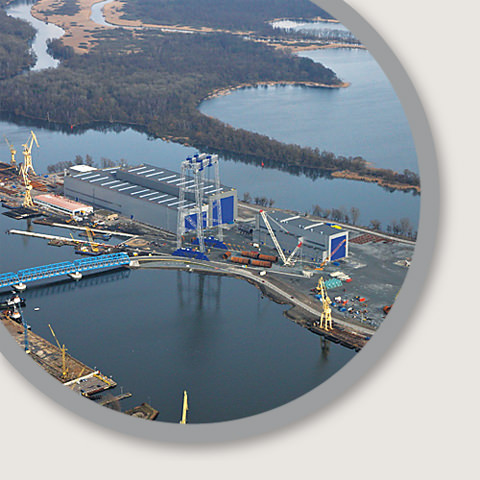
The premises of Bilfinger Mars Offshore in Szczecin, Poland
The tight dimensional tolerances and the availability of tube lengths up to 18 m make HFI-welded tubes from Salzgitter Mannesmann Line Pipe the ideal material for the new standard jackets. The enormous tube length means much fewer girth welds are needed within the jacket structure. This, in turn, reduces welding and testing requirements significantly.
Dr. Stephan Brauser of Salzgitter AG: "Our calculations reveal that, with standardized structures, the production time needed for the nodes can be reduced by about 60%, and overall costs by about 30% compared with manual one-off production."
Additional advantages of automated K- and X-joint welding and prefabrication of the jacket legs are fewer flaws and much easier test documentation. The nodes are made in dimensions of up to 4 x 4 x 4 m and weights of up to 10 t. The entire production process as such is designed for jacket heights of up to 85 m, a base size of 27 x 27 m, and weights of up to 1,250 t.
"This means we are setting new standards regarding the cost effectiveness and speed of jacket structure production for offshore wind energy plants," says an upbeat Stephan Brauser.
Maintenance-free corrosion protection for foundation structures
Besides economical production, corrosion protection also plays a key role when it comes to the sustainability of jacket structures. Salzgitter Mannesmann Line Pipe has been closely involved in the development of a totally new protection strategy based on a polyamide 12 coating.
Offshore wind energy plants work under harsh weather conditions. Wind, waves and UV radiation create punishing loads, and corrosion induced by salt water attacks structural components such as tubes and nodes. The anti-corrosion coatings used until now on offshore foundation structures were not designed for a service life of 20 to 25 years and hence needed considerable maintenance under the described conditions.
"What‘s more, conventional coatings based on epoxy resins are quite time-consuming, as they have to be applied in several layers, each of which must set and harden," pointed out Hanno Schnars, at the start of the project responsible for the KOWIND project at the Fraunhofer Institute for Wind Energy and Energy System Technology (IWES). KOWIND stands for Korrosionsschutz für Offshore-Windenergieanlagen, which is German for Corrosion Protection for Offshore Wind Energy Plants. Besides the IWES, partners in the project sponsored by the German Federal Ministry of Education and Research include the chemical companies Evonik and TIB Chemicals, Salzgitter Mannesmann Line Pipe, the engineering firm Prof. Bellmer, the research institute IFINKOR, and the University of Duisburg-Essen.
The efficiency of the new corrosion protection strategy has been successfully proved for large components as well.Mareike Collmann, Fraunhofer Institute for Wind Energy and Energy System Technology IWES Northwest
Maintenance-free protection for 25 years
The objective of the project is to coat the tubes and components of offshore foundations with a thermoplastic layer of polyamide 12, in order to ensure maintenance-free corrosion protection for 25 years. Significantly longer intervals between inspections, more economical production of the foundation structures, and substantially lower operating costs due to reduced maintenance requirements also played an important role in the research project.
Corrosion protection based on polyamide and PUR coatings
Within four years, the project partners developed a corrosion protection strategy for welds and node structures, which – unlike tubes - cannot be coated using the extrusion technique. Dr. Hans-Jürgen Kocks, who was involved in the project on the side of Salzgitter Mannesmann Line Pipe, explains: "To start with, the component to be coated is shot-blasted to the applicable specification and provided with a primer that matches the PA12 coating. Subsequently, a cold-ground UV-stable PA12 powder is flame-sprayed onto the primer, of course also to tested specifications."
Tests on the demonstrator
For verification of the resistance under dynamic loads, especially in the weld areas, a hollow section node in a double-K configuration was chosen as a test specimen. Scaled approximately 1 : 2.5, it was subjected to robustness and fatigue tests. A tangential brace was subjected to sinusoidal oscillations, which created a real mechanical load that acted not only on the steel structure, but also on the coating. No peeling was observed during the fatigue test. In order to document potential progressive damage to the steel structure, more than 80 strain gauges were applied in the weld area, which is particularly susceptible to fatigue.
Positive upshot of the project
"A registered increase – or drop - in strain could have indicated signs of cracking and thus initial damage," is how Mareike Collmann from IWES explained the testing technique. Under the load level defined in the project, there was, however, no abnormality observed in the steel node strructure nor in the coating throughout the duration of the test. "So the efficiency of the new corrosion protection strategy has been successfully proved for large components as well," is Mareike Collmann‘s positive conclusion.
Thomas Elzenbaumer, Regional Sales Manager Structural Tubes Wind Energy Projects at Salzgitter Mannesmann Line Pipe: "With the new corrosion protection strategy, we are putting a tailored, sustainable innovation at our customers‘ disposal. Within the framework of KOWIND, it has been possible to define the requirements on an extruded PA12 coating in a detailed mill standard, which is now available to our customers as a technical delivery condition, and that constitutes a contractual basis. At the same time, this standard prepares the ground for the certification of this maintenance-free corrosion protection for offshore jacket structures."

Fatigue test on a hollow section node: Test set-up on a multi-axial testing machine (span) at the test center for load-bearing structures, Hannover.
© Photo jan.meier / Fraunhofer IWES, 2015
